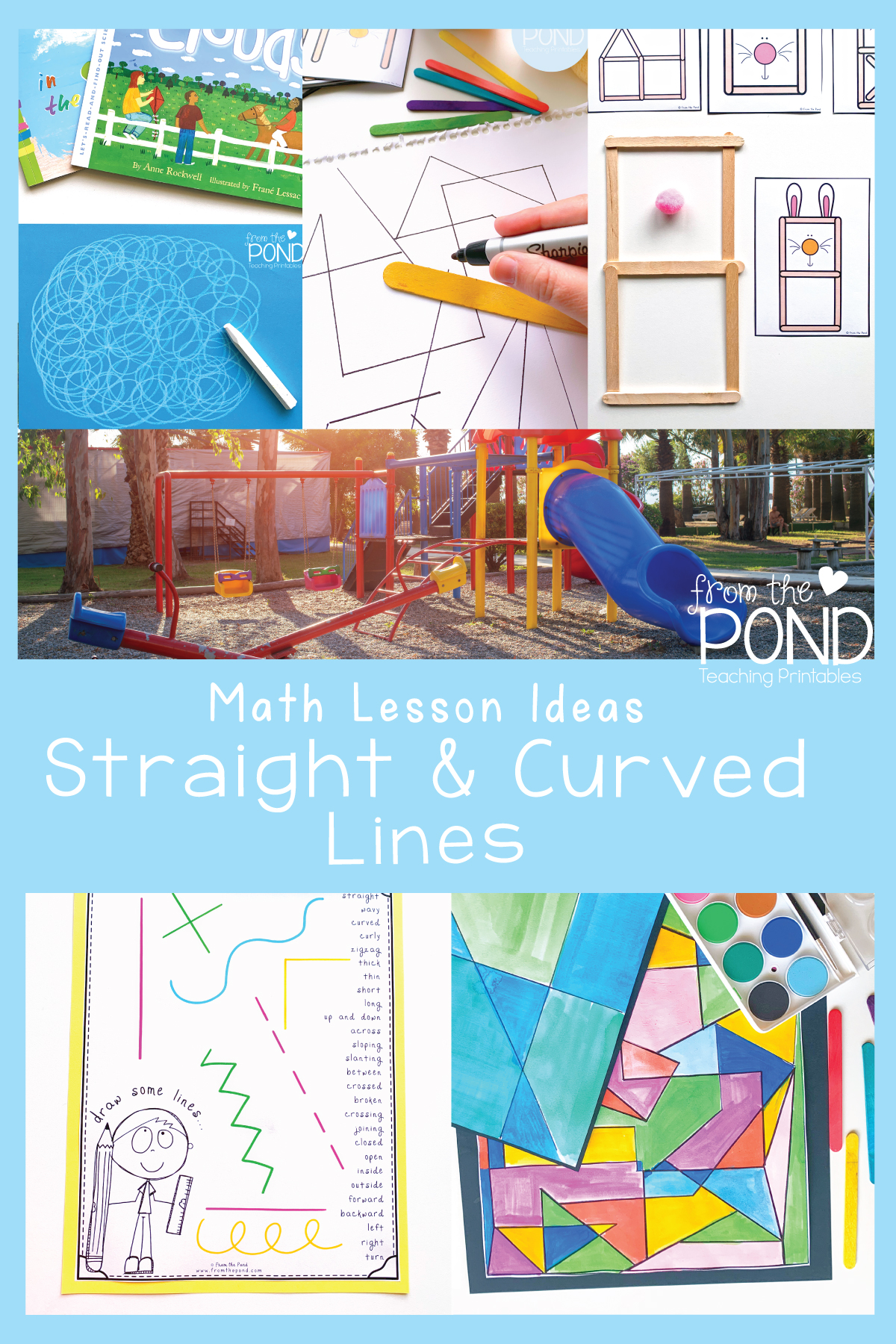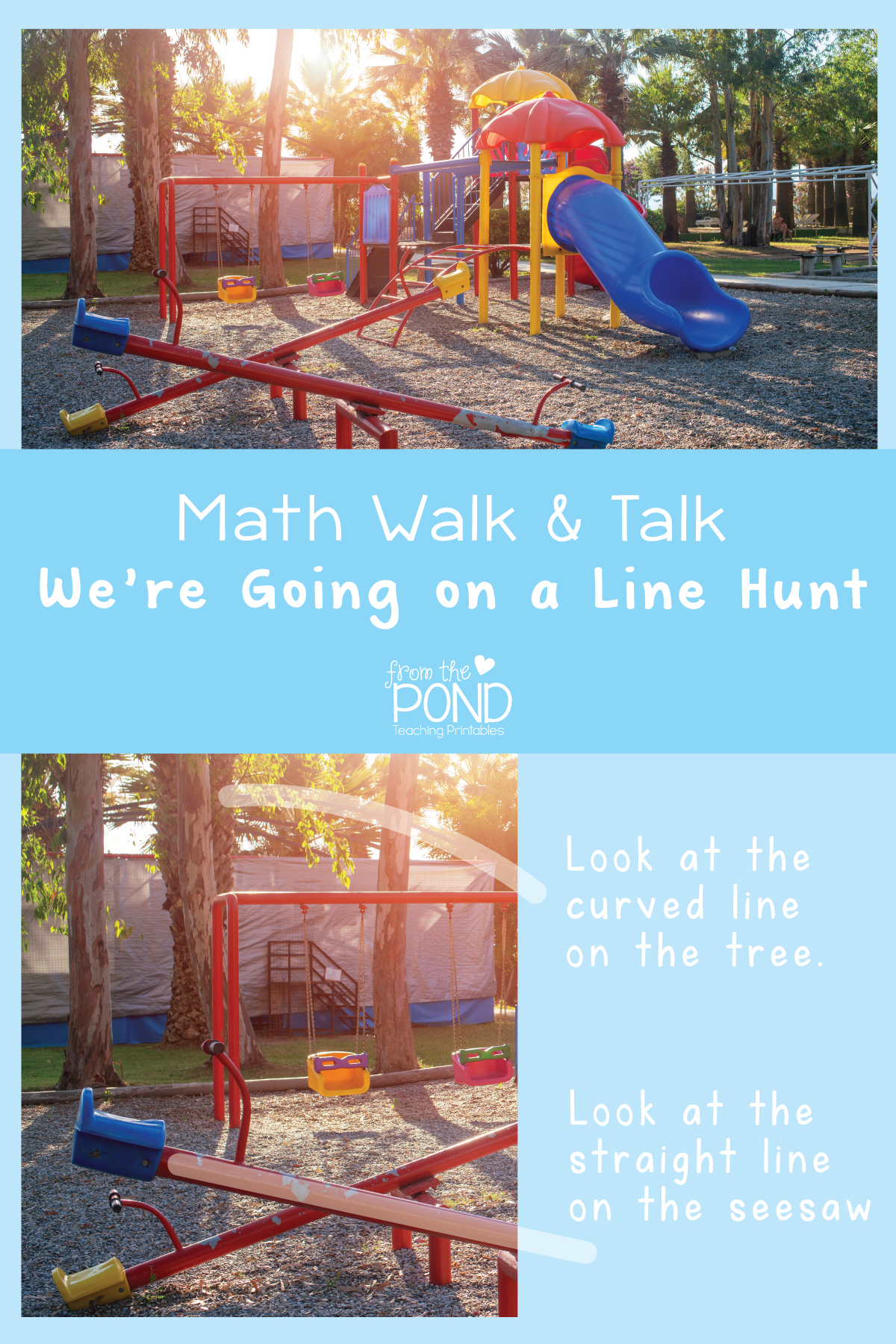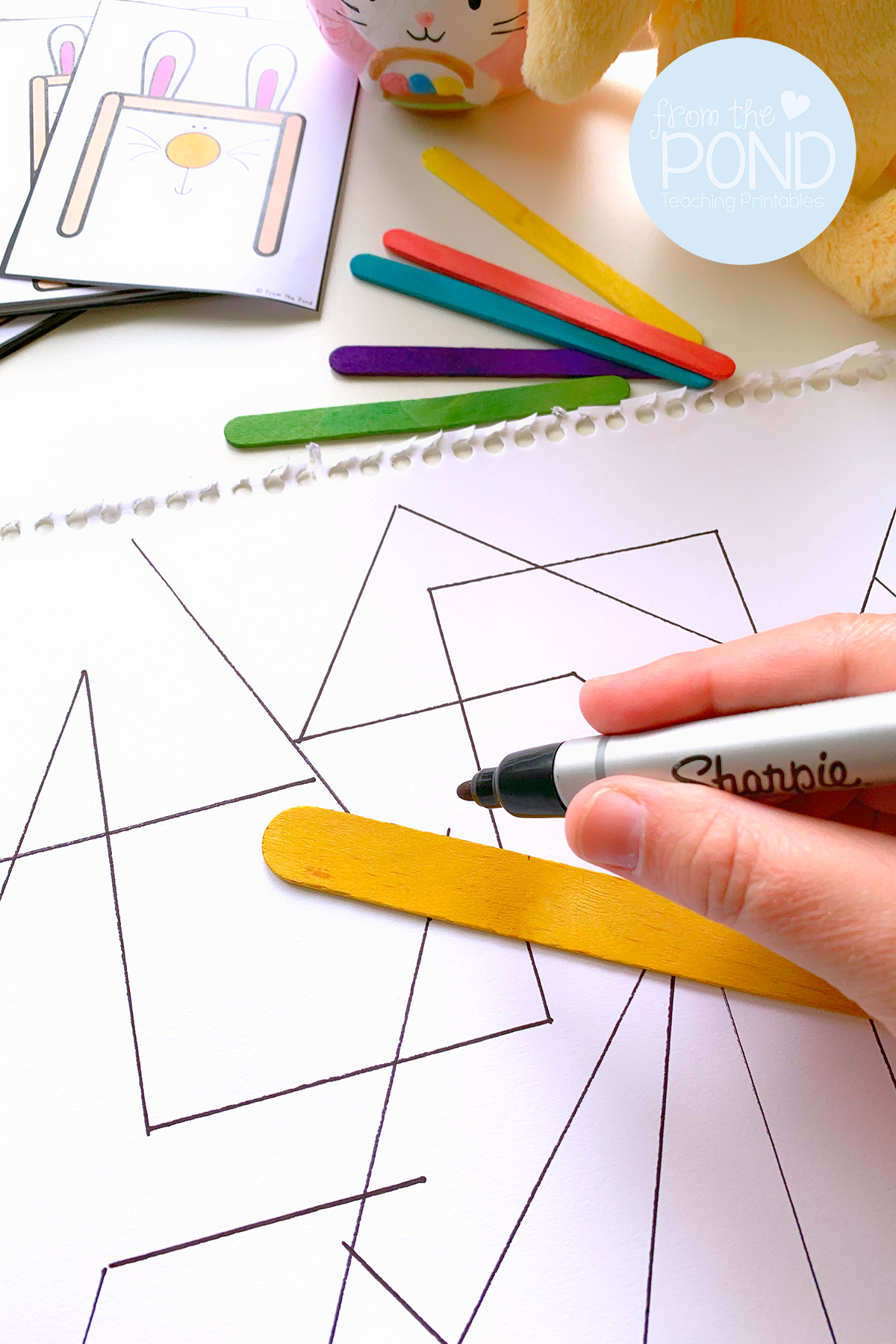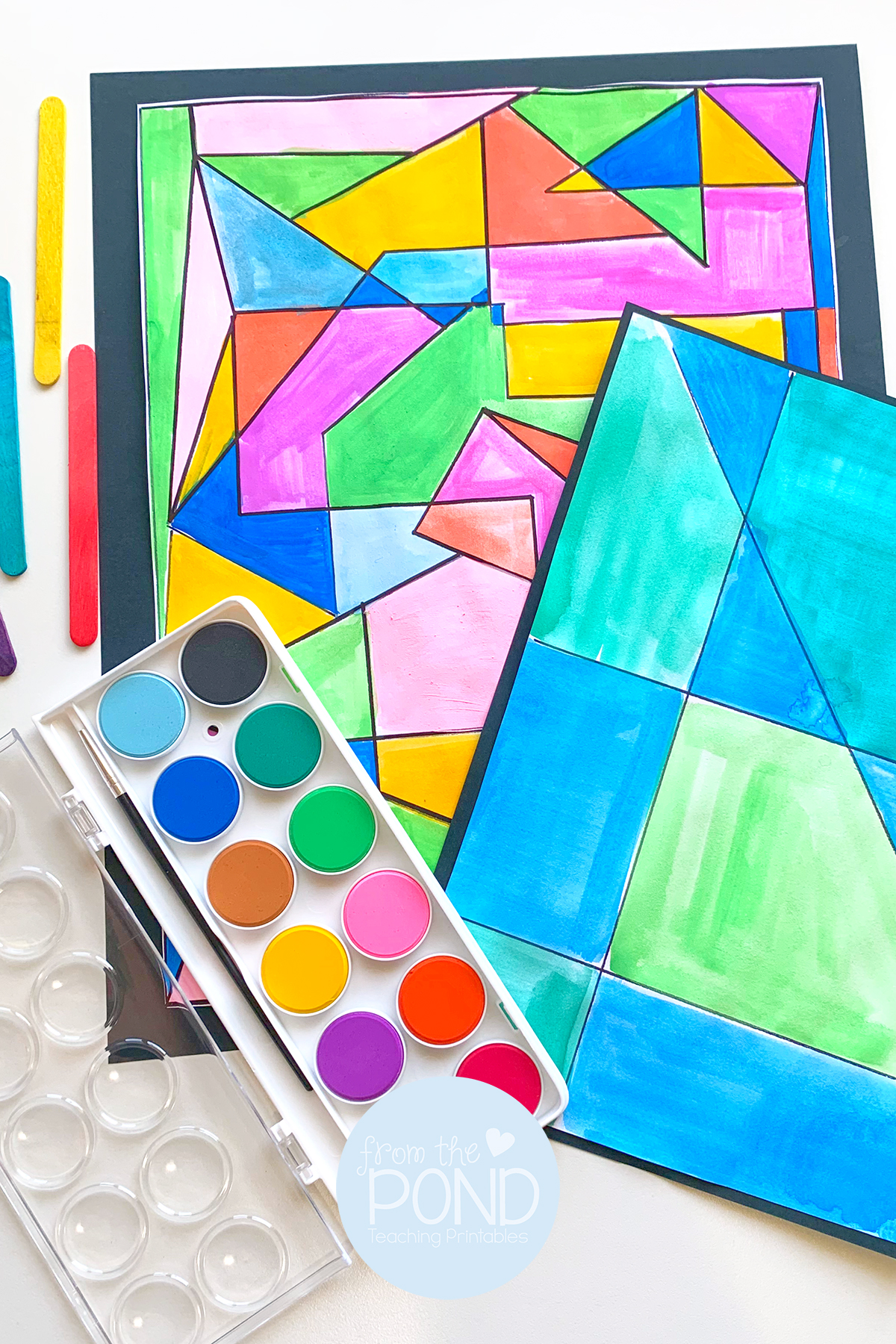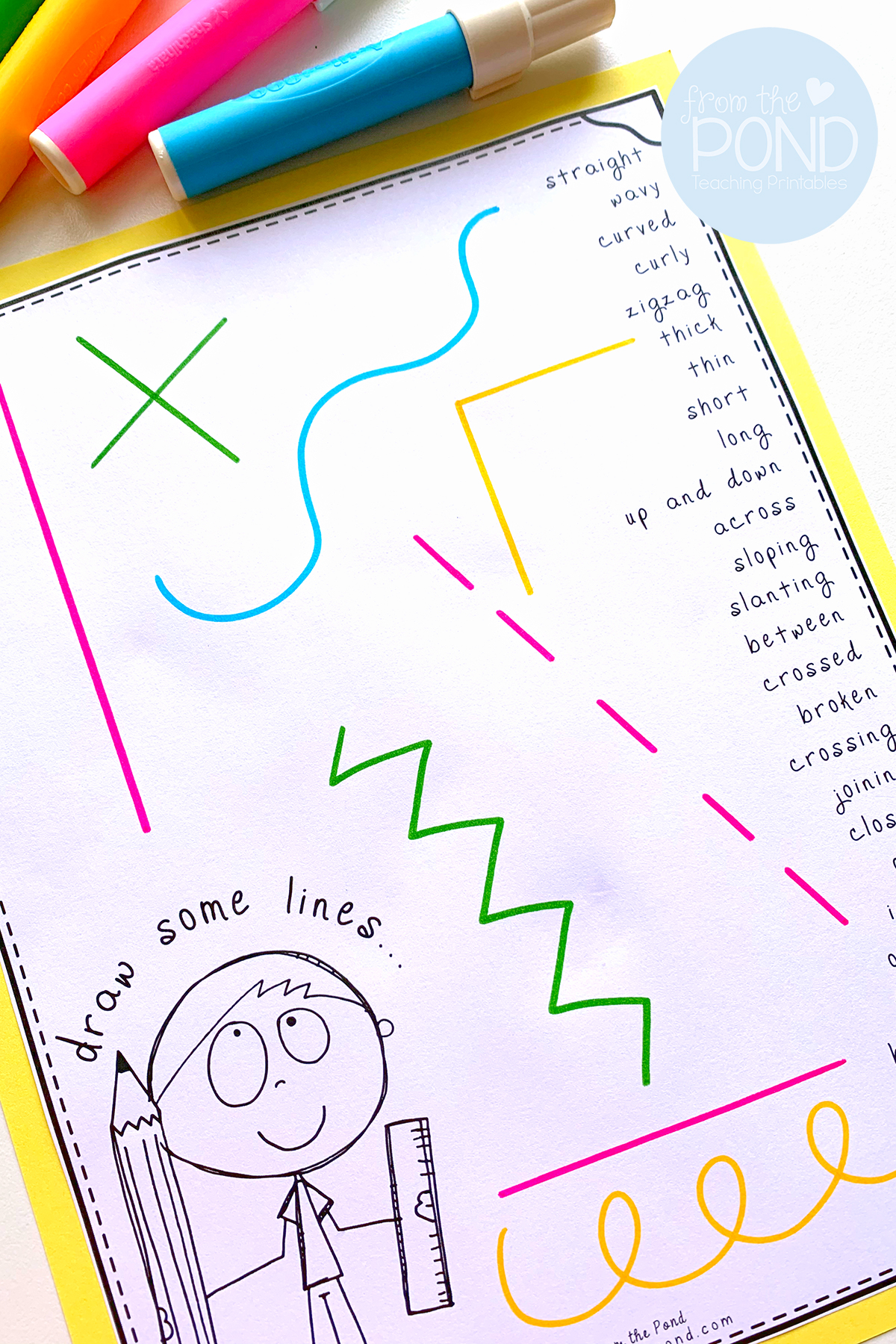Did you see our recent post for an art project that encouraged your students to practice handwriting movements and lines to make clouds?
Here are some ideas to extend upon that lesson and revisit the idea of lines in your math program. You will help your students:
- identify straight and curved lines
- describe a variety of lines
- understand that shapes are created with lines
Have a talk
Reflect back to your cloud art projects and talk about the different lines shown on your display. Some students may have used multiple line styles in a scribble technique or refined their strokes and used one, like a loopy or wavy line.
Tell students that for math today you want them to start thinking about lines as one of 2 types - curved or straight. Have a discussion about these types of lines in the environment - outside or in the classroom. Show some specific examples. Trace with your finger. Show a printed photo and draw over some objects with a pen to show the lines (edge of table is a straight line, soft edge of toy is a curved line).
Math Talk and Language
Encourage and model the use of informal math language. It does not matter at this stage if students use correct terminology, what matters most is that they understand the concept and can describe it. Here are some words you might use:
straight, wavy, curved, curly, zigzag, thick, thin, short, line, up and down, across, sloping, slanting, between, crossed , broken, crossing, joining, paths, closed, open, inside, outside, forward, backward, left, right, turn
Line Hunt Math Walk and Talk
Take students on a line walk. Stop and identify lines. Lines on buildings, equipment, drains, gutters, paths and in nature - tree branches, leaves and flowers. Compare them. Talk about them. Take photos for reflection back in the classroom. Draw pictures in math journals. Encourage lots of discussion and model for your learners the joy of being curious and discovering detail in our world.
Partner Play
While outside, let the students play a line game. They will demonstrate their understanding of straight lines by 'walking' in lines in a designated space. Tell them to be creative - long lines, short line, turns, right, left (model positional language). Ask students to work with a friend. One walks a straight line path on the concrete or hard surface. The other student traces the path with sidewalk chalk. Once completed they can stand back and look at the line path created by walking in straight lines. Encourage them to describe it using positional language.
Shape Cards
Our stick shape cards are great to include in a learning center that fosters visual memory, fine motor skills and a focus on using lines and angles to create shapes. Students will be encouraged to use mathematical language as they position each stick to make and modify shapes as they progress from card to cards. They will be able to experience how lines helps us make shapes. Find our shape stick activity cards over on the website.
Line Art Project
Following these experiences you can give your students time to create an artwork with straight lines. Depending on their age and ability to rule lines, you will need to modify this experience. A giant collaborative class art project could be worked on together as you support and scaffold the drawing of lines with the giant classroom ruler.
Teach students to use a 'ruler', holding it in position with one hand and drawing with the other. Use the pop sticks from the shape card activity as a beginning ruler. Demonstrate to students how to draw lines all over page without worrying too much about their position. They can cross, intersect and overlap to create shapes. Students can color or paint sections to show the shapes they created.
